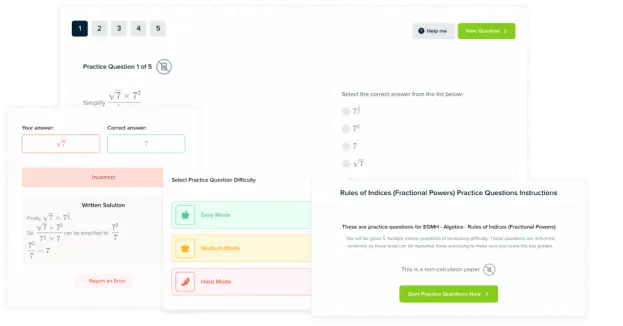Uses and Risks of Radiation
Uses and Risks of Radiation Revision
Uses and Risks of Radiation
Radiation is present in our everyday lives and can also be really useful. However, certain types of radiation can be very dangerous because they can damage our cells and DNA.
Irradiation
Irradiation is the exposure of an object to nuclear radiation. The irradiated object itself does not become radioactive.
This can be dangerous because radiation exposure may kill cells or damage DNA in cells, leading to genetic mutations which may cause cancer. The level of the hazard posed by irradiation depends on the type of radiation and how much radiation you are exposed to.
Irradiation can be useful however, such as when it is used for the sterilisation of surgical instruments. Just as gamma-rays can kill human cells, they can also be used to kill unwanted bacteria. The surgical instruments do not become radioactive during this process and as a result, they are cleaned.
You can protect yourself from irradiation when handling radioactive sources by holding the sources with tongs as far away from the body as possible, limiting your exposure time by completing the task quickly and shielding sources with lead when they are not in use.
Radioactive Contamination
Radioactive contamination is the unwanted presence of radioactive atoms on other materials.
This causes a hazard because when the radioactive atoms decay, they release potentially harmful nuclear radiation. The level of hazard depends on the type of radiation emitted.
Contamination can be useful, for example, in medicine, sometimes a patient’s blood is deliberately contaminated with a radioactive source called a radiotracer, such as technecium-99. The radiotracer allows imaging of different parts of the patient’s body because the radiation emitted by the radiotracer can then be detected by an external detector such as an X-ray detector or a PET scanner.
To protect your body and other materials from becoming contaminated, radioactive sources should be stored in sealed containers and you should wear protective clothing when working with the sources, as well as a face mask to avoid breathing in any particles from the source.
Background Radiation
Background radiation is a small amount of radiation that surrounds us all the time. It comes from:
- Certain types of rocks
- Cosmic rays from space
- Man-made sources such as the fallout from nuclear accidents and weapons testing
The amount of background radiation varies depending on your location.
Radiation Dose
The amount of radiation you have been exposed to is measured using radiation dose.
Radiation dose is measured in sieverts \text{(Sv)}. Sometimes this is quoted in millisieverts \text{(mSv)}. It is useful to remember that 1000\text{ mSv}=1\text{ Sv}.
Factors that affect radiation dose:
- The type of radiation.
- How much of the radioactive source there is.
- How long you are exposed to the radiation for.
- The half-life of the radioactive isotope. A shorter half-life means that more radioactive decays will happen in a short period of time.
- Whether or not you are wearing protective clothing.
Uses and Risks of Radiation Example Questions
Question 1: Define irradiation.
[1 mark]
The exposure of an object to nuclear radiation.
Question 2: Define radioactive contamination.
[1 mark]
The unwanted presence of radioactive atoms on other materials.
Question 3: Would a thin paper face mask protect you from irradiation or contamination? Explain your answer.
[3 marks]
It would protect you from contamination.
The thin sheet of paper would not stop alpha, beta or gamma radiation and so you may still be irradiated.
The face mask would prevent you from breathing in radioactive particles which may contaminate your body.
Question 4: Name the three main sources of background radiation.
[3 marks]
- Certain types of rocks.
- Cosmic rays from space.
- Fallout from nuclear accidents and weapons testing.
Question 5: A student is performing an experiment in which they must stand close to a radioactive source. Suggest 3 ways in which the student could reduce their radiation dose during this experiment.
[3 marks]
- Stand as far away as possible from the radioactive source.
- Reduce the time spent near the radioactive source.
- Wear protective clothing.
Accept other appropriate suggestions.
Uses and Risks of Radiation Worksheet and Example Questions
Atoms and Isotopes Questions
GCSEOfficial MME
MME Premium Membership
£19.99
/monthLearn an entire GCSE course for maths, English and science on the most comprehensive online learning platform. With revision explainer videos & notes, practice questions, topic tests and full mock exams for each topic on every course, it’s easy to Learn and Revise with the MME Learning Portal.
Sign Up Now




